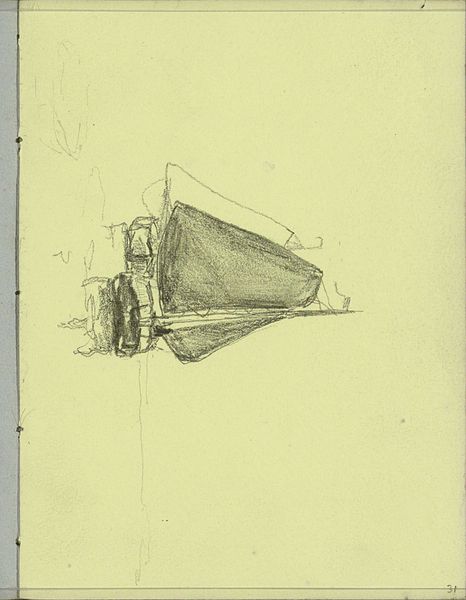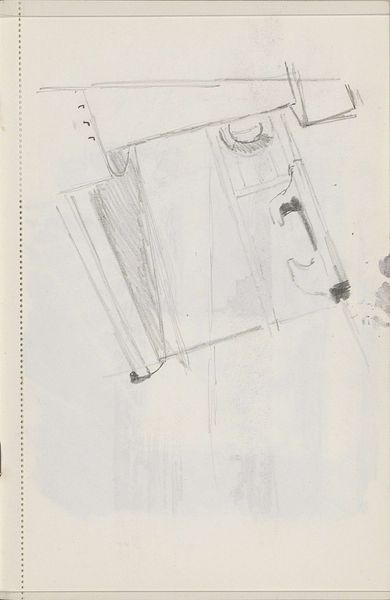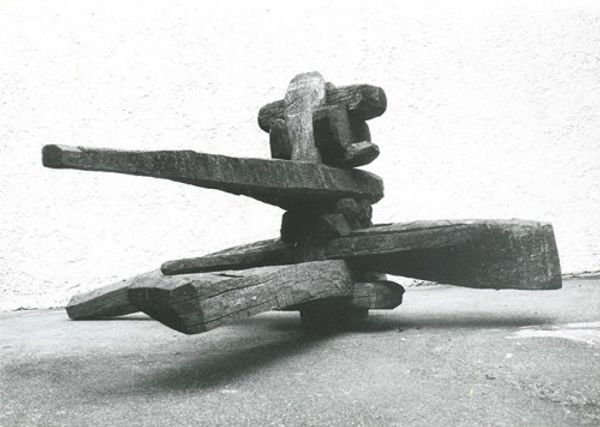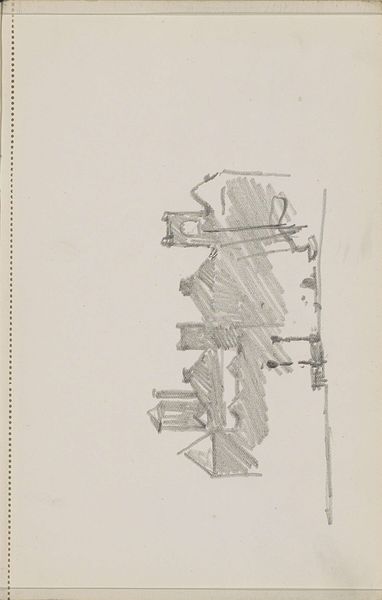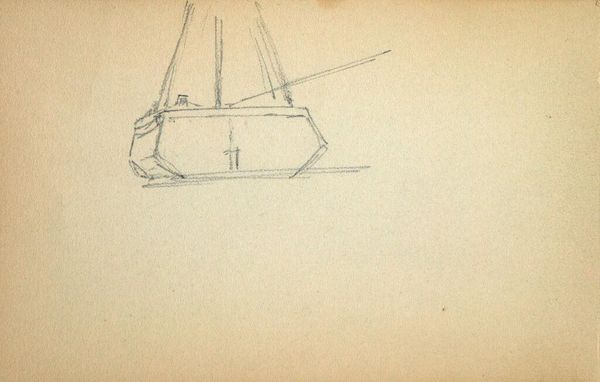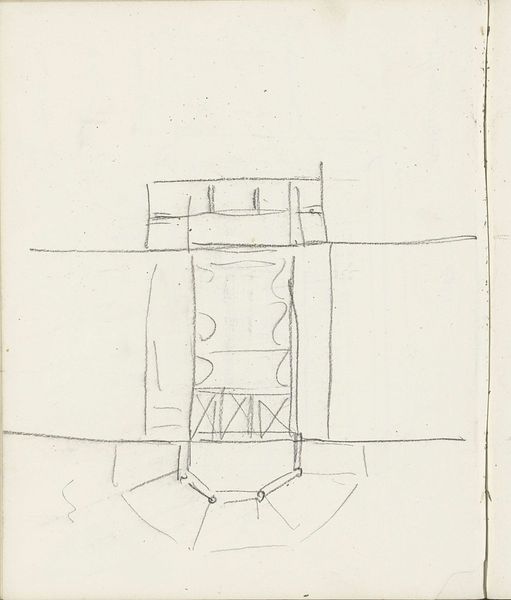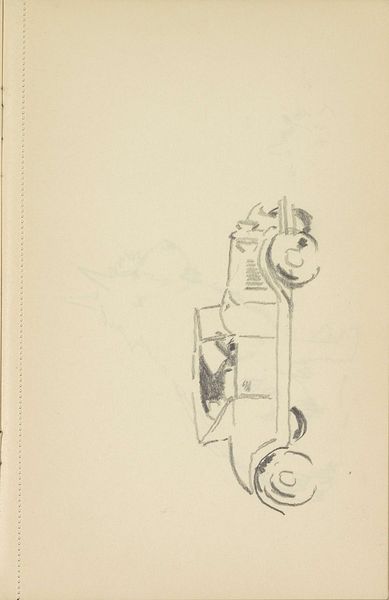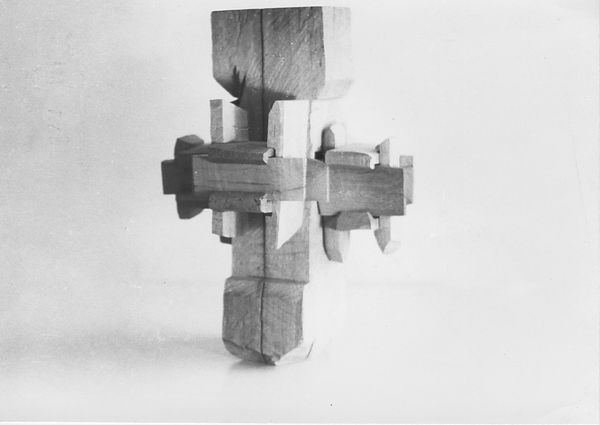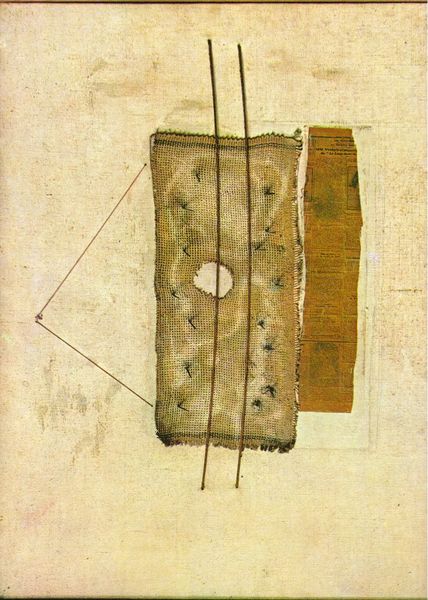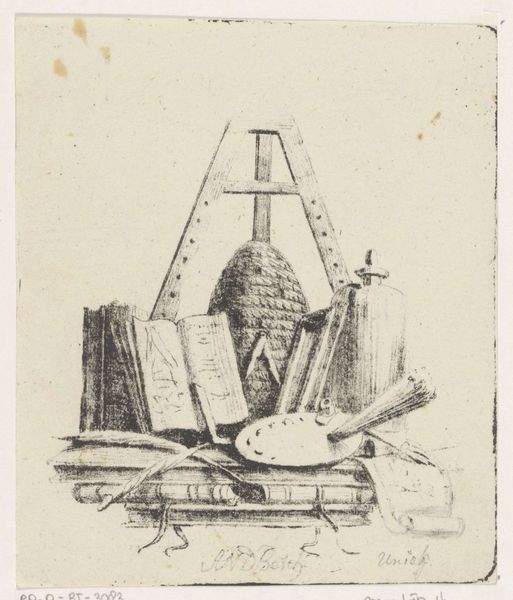
assemblage, sculpture, wood
#
cubism
#
assemblage
#
geometric
#
sculpture
#
abstraction
#
wood
Copyright: Public domain US
Editor: This is Picasso's "Mandolin," created in 1914 using wood and other materials in an assemblage. The geometric shapes and different textures of wood create a striking visual, yet I struggle to see a mandolin. What should I be looking for? Curator: Observe the relationship between forms, not their representational accuracy. Dissect the interplay of planar surfaces, the concavities and convexities suggested by the assemblage. Notice how the white, curving element interlocks with the more angular components. How does this tension between the curved and angular influence your understanding? Editor: I see that the curve softens the harsh geometric shapes. So, instead of searching for a literal depiction, should I focus on how the various wooden forms relate to one another to evoke the idea of a mandolin? Curator: Precisely. The genius lies in deconstructing the object. Note the use of different wood grains and how that effects the sense of space. Are we looking at a relief or a construction? Does the eye rest or does it continually wander? Editor: My eyes definitely keep moving, trying to reconcile the different depths and textures. It's challenging, but engaging. It is as if he disassembled a mandolin, then rebuilt it from a purely design perspective. Curator: Your observation is perceptive. The beauty isn't about replicating reality but about forging a new, purely formal reality from disparate materials and planes. Its aesthetic power is generated by that very tension. Editor: That makes it less frustrating to try to understand. Instead of trying to see the thing itself, I am beginning to understand how the construction conveys something about form in space. Thanks! Curator: Indeed! Thinking about this assemblage allows us to decode artistic language and appreciate the intentionality in the artist's manipulation of shapes and textures. It’s a lesson in seeing beyond the surface, isn't it?
Comments
No comments
Be the first to comment and join the conversation on the ultimate creative platform.
